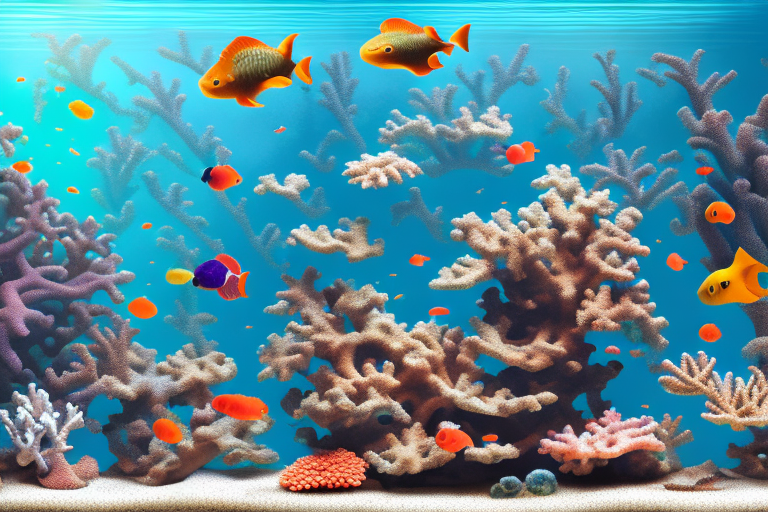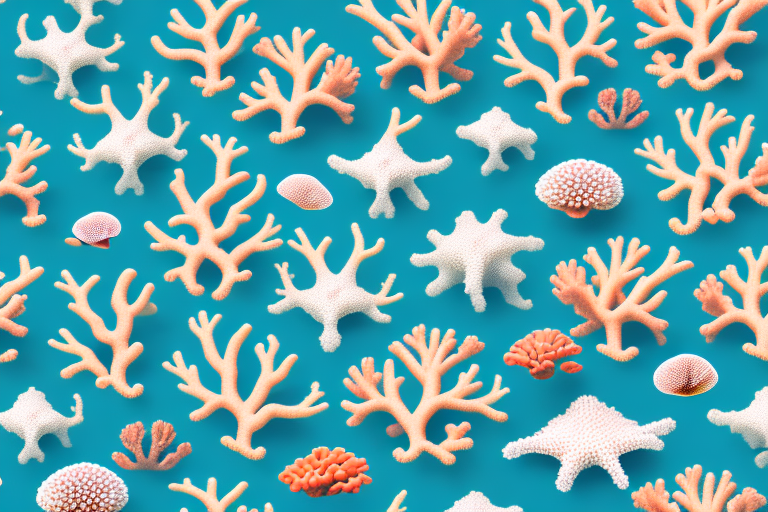Finding the Cheapest Shipping Rates for Your Coral Reef Tank: Comparing FedEx and UPS
If you're a coral reef tank enthusiast, maintaining the health and well-being of your marine life is paramount. Transporting your precious coral reef tank safely and affordably is a significant concern. Shipping a coral reef tank involves potential risks, making it essential to choose a reliable carrier. This article compares the shipping rates and services of two major carriers: FedEx and UPS, to help you make an informed decision.
The Importance of Comparing Shipping Rates for Your Coral Reef Tank
Comparing shipping rates is crucial for several reasons:
- Cost Efficiency: Shipping rates vary based on factors like size, weight, and destination. Comparing rates ensures you get the best deal.
- Hidden Fees: Identifying potential surcharges such as handling fees or fuel surcharges helps avoid unexpected costs.
- Safety and Condition: Different carriers offer varying packaging and handling options that can affect the safety of your tank during transit.
- Convenience: Comparing delivery options and pickup locations can save you time and hassle, especially if you need timely delivery.
By carefully evaluating these factors, you can select a carrier that balances cost with the quality of service, ensuring your coral reef tank arrives safely and on time.
Understanding the Shipping Process for Live Coral
Packing and Preparation
Shipping live coral involves several critical steps to ensure the safety of your marine life:
- Packing: Use a sturdy container, such as a polystyrene foam box, to withstand the rigors of shipping.
- Protection: Secure the coral reef tank with packing materials like bubble wrap or packing peanuts to prevent movement and damage.
- Labeling: Clearly label the package with "Live Coral" and "Fragile" to inform handlers of the delicate nature of the shipment.
Timing and Environmental Considerations
Shipping live coral should be timed to avoid extreme temperatures, which can be harmful. Choose periods with moderate weather conditions to minimize stress on the marine life.
Carrier Selection
Opt for carriers that specialize in live animal transportation and have experience handling delicate shipments like live coral. Effective communication with the carrier is essential to convey any specific handling instructions.
Packing Your Coral Reef Tank for Shipping
Choosing the Right Container
Select a durable container, such as a double-walled corrugated box or a custom-made shipping crate, to provide maximum protection during transit.
Securing the Package
Use ample packing materials to cushion the tank and prevent shifting. Consider adding insulated materials if temperature control is necessary.
Labeling and Documentation
In addition to labeling the package as "Live Coral" and "Fragile," include any necessary documentation, such as permits or health certificates, to comply with shipping regulations.
Acclimating Marine Life
Upon arrival, acclimate your marine life to the new environment by gradually adjusting the temperature and salinity of the water. This process can take several hours to days, depending on the tank size and marine species.
Choosing the Right Carrier for Your Coral Reef Tank
Reputation and Reliability
Research carriers' reputations for handling fragile shipments by reading customer reviews and testimonials. Reliable carriers have a track record of safely delivering delicate items.
Shipping Rates and Insurance
Compare shipping rates between carriers to ensure cost-effectiveness. Additionally, ensure the carrier offers insurance options to protect against potential damage or loss.
Transit Time and Delivery Options
Evaluate the carriers' delivery timeframes and available shipping options. Faster delivery may cost more but can reduce transit time, minimizing stress on your coral reef tank.
Customer Service and Support
Choose a carrier with responsive customer service to address any concerns or special requirements you may have during the shipping process.
Comparing FedEx and UPS Shipping Rates
Rate Structures
Both FedEx and UPS offer competitive rates, but their pricing structures differ:
- FedEx: Generally more cost-effective for shipments under 50 pounds. Their "Priority Overnight" service guarantees next-business-day delivery.
- UPS: Often offers better rates for heavier shipments over 50 pounds. Their "Next Day Air" service is comparable to FedEx's overnight options.
It’s essential to get quotes based on your specific shipment details to determine the most economical choice.
Destination-Based Pricing
Shipping rates can vary significantly based on the destination. Research and compare rates for your specific location to ensure you’re getting the best deal.
Additional Services
Consider any additional services offered by each carrier, such as temperature-controlled shipping or specialized handling, which might be necessary for live coral.
Evaluating Quality of Service and Delivery Timeframes
Tracking and Transparency
Both FedEx and UPS provide robust tracking systems, allowing you to monitor your shipment in real-time. This feature is crucial for high-value or delicate items like coral reef tanks.
Customer Service Quality
FedEx is renowned for its exceptional customer service, providing responsive support and assistance. UPS also offers customer support, though some users report varying experiences.
Delivery Reliability
Ensure that the carrier you choose has a reliable delivery record. On-time delivery is critical to minimize stress on your marine life.
Saving Money and Avoiding Common Mistakes
Cost-Saving Tips
- Off-Peak Shipping: Ship during non-peak times to avoid surcharges and higher rates.
- Third-Party Services: Use third-party shipping services like Shiply or Freightquote to negotiate lower rates.
- Package Consolidation: Combine multiple items into one shipment to reduce overall costs.
Common Shipping Mistakes
- Overpacking: Excessive packing materials can lead to higher shipping costs and potential damage.
- Poor Labeling: Inadequate or incorrect labels can result in mishandling of your shipment.
- Lack of Insurance: Failing to insure your shipment can leave you vulnerable to losses in case of damage or theft.
Insurance and Tracking Options
Understanding Insurance Options
Both FedEx and UPS offer insurance for live coral shipments. Understanding the coverage limits and costs is essential:
- FedEx: Offers declared value coverage with varying limits based on the shipment's value.
- UPS: Provides declared value coverage, allowing you to declare the value of your shipment for added protection.
Choose an insurance level that adequately covers the value of your coral reef tank to mitigate potential losses.
Tracking Your Shipment
Utilize the tracking services provided by FedEx and UPS to monitor your shipment's progress. This transparency helps you stay informed and prepared for the arrival of your coral reef tank.
What to Do if Your Coral Reef Tank Arrives Damaged
If your shipment arrives damaged, take the following steps immediately:
- Document the Damage: Take clear photos of the damaged package and contents.
- Contact the Carrier: Report the damage to the carrier as soon as possible to initiate a claim.
- File an Insurance Claim: Submit a claim with the carrier's insurance provider to cover the damages.
- Assess Marine Life Health: Consult with a marine life expert to evaluate the health and well-being of your coral reef tank.
The Benefits of Working with a Professional Shipping Company
Professional shipping companies specializing in live animal transport offer several advantages:
- Expert Handling: Experienced in managing delicate shipments like live coral.
- Temperature Control: Provide temperature-regulated shipping options to maintain optimal conditions.
- Additional Services: Offer services such as quarantine shipping or specialized packaging.
While potentially more expensive, the enhanced safety and specialized services can provide peace of mind and ensure the safe delivery of your coral reef tank.
Final Thoughts on Finding the Cheapest Shipping Rates for Your Coral Reef Tank
Shipping a coral reef tank requires careful consideration of cost, safety, and reliable service. By comparing shipping rates and evaluating the quality of service offered by carriers like FedEx and UPS, you can find the most cost-effective and reliable option for transporting your marine life. Utilize tracking and insurance options to safeguard your shipment, and consider professional shipping services for added expertise. Following these guidelines will help ensure your coral reef tank arrives safely and affordably.






















